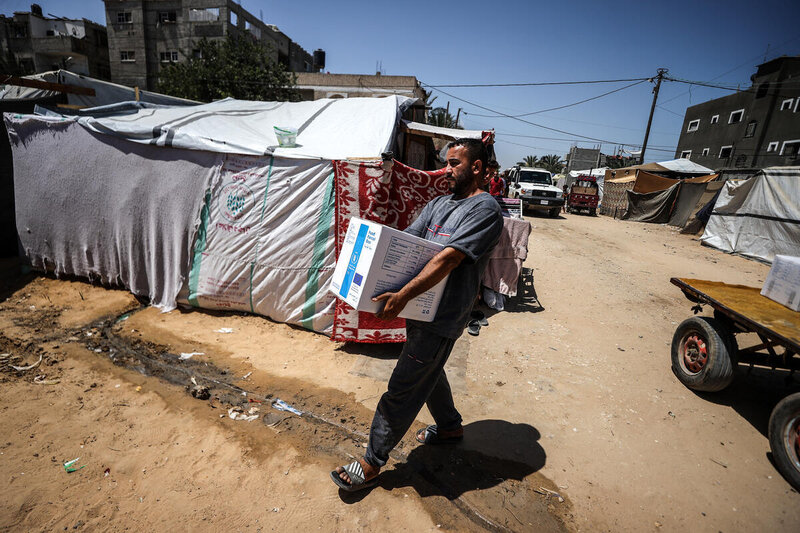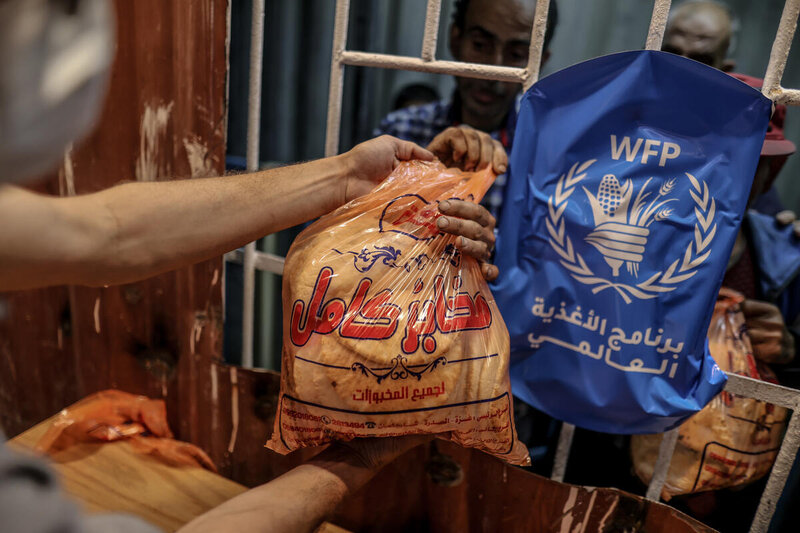Gaza updates: Hunger deepens as aid plummets

As Gaza slips out of the media focus, overshadowed by the unfolding Lebanon crisis, hunger remains rampant and the threat of famine persists. A year into the war, three-quarters of Gazans rely on food assistance to survive – yet, efforts to bring in vital supplies face increasing challenges.
- Aid entering the Strip has plummeted to its lowest level in months, forcing WFP to stop the distribution of food parcels in October. If the flow of assistance does not resume, one million vulnerable people will be deprived of this lifeline.
- There are around 100,000 tons of food positioned at different corridors (Jordan, Ashdod, Egypt) – enough to feed over a million people for 5 months, but the closure of crossing points, security issues and route disruptions at crossings are limiting aid delivery.
- Across Gaza, commercial goods are also in short supply and high prices put what little is available out of reach.
- With winter approaching, and having already endured one year of conflict, Gazans find themselves without adequate shelter, no fuel and very little aid. Families have resorted to selling any belongings they have, searching through the rubble for money or food. Over one million people are living in tents, facing worsening food insecurity due to a lack of proper nutrition or shelter.
- In northern Gaza, the situation is worsening again. Virtually the entire area is under evacuation orders, and thousands of families have been forced to flee amid intense airstrikes and military operations on the ground. There is nowhere for these people to go, and hardly any way for WFP to reach them. With the main aid crossings into northern Gaza closed and WFP-partner kitchens forced to shut down, WFP is no longer able to distribute food in any form to families that desperately need it.

-
In southern and central Gaza, where very limited supplies are entering due to insecurity around crossing points, the situation is at breaking point. There are no food distributions, and bakeries are running out of wheat flour. Some hot meal kitchens are still able to provide around 350,000 meals a day in some of the southern areas of Gaza. If WFP is unable to provide resources, bakeries in the south are at risk of shutting down within a week.
Beyond Gaza
WFP is deeply concerned by developments in the West Bank, where the situation is volatile. Large-scale Israeli military operations, restrictions of movement and increasing settler violence are contributing to driving up hunger.
- More than 160,000 people have lost their work permits for Israel, meaning that families are without income.
- WFP estimates that the escalation of violence and spillover effect of the war in Gaza could push at least 600,000 people into food insecurity in the West Bank compared to 352,000 people at the start of 2023.
- WFP’s programme providing vouchers to buy food in the West Bank has expanded sixfold and as of September we are reaching nearly 215,000 affected Palestinians with cash-based transfers. We provide cash top-ups in support of the national social safety net systems and one-off cash for displaced civilians in collaboration with the Ministry of Social Development and UNRWA.
